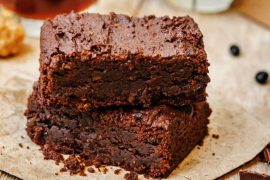Ditching sugar and adopting a low-sugar lifestyle can have transformative effects on health and significantly reduce the risk of diabetes. To achieve this, it’s crucial to be mindful of unsuspected sources of sugar in one’s diet. Often, seemingly innocent items like ketchup, seasoning, or instant oatmeal can contain hidden sugars.
To lower daily sugar intake, it’s essential to be aware of these hidden sources and find suitable alternatives that are less sugary and lower the risk of obesity. Starting with small changes, such as eliminating sugar from coffee or cutting out sugary drinks, and gradually replacing creamy desserts with natural, fruit-based alternatives can pave the way to a healthier lifestyle. Additionally, incorporating more protein into meals can help curb sweet cravings and further support the goal of reducing sugar consumption.
1. Opt for Healthy Beverages:
Prioritize water as your main hydration source, steering clear of processed drinks like sodas and energy drinks. Replace aerated drinks with healthier alternatives such as fruit smoothies, herbal teas, unsweetened coffee, vegetable juices, skim milk, thin buttermilk, sattu drink, aloe vera shots, and coconut water.
2. Control Condiment Usage:
While condiments enhance flavor, be cautious of their unhealthy components, such as artificial flavors, colors, excessive salt, and sugar. Limit the use of condiments like ketchup, sauces, pickles, and seasonings that may contribute to added sugars.
3. Cut Down on Sugary Desserts:
Eliminate sugary desserts from your diet as they often lack nutritional value and can lead to spikes in blood sugar levels. Opt for low-sugar dessert alternatives like 70 percent cocoa dark chocolate, baked fruit with cream, and yogurt with spices such as cinnamon and nutmeg.
4. Read Food Labels:
Be vigilant about reading food labels, especially for processed and canned items, to identify added sugars. Ingredients are listed by quantity, so prioritize products with sugars lower on the ingredient list and avoid those with sugar or its synonyms like sucrose, maltose, dextrose, fructose, glucose, and lactose.
5. Increase Protein Intake:
Emphasize a high-protein and fiber diet to reduce hunger and promote satiety. Introduce protein-rich foods like lean meat, eggs, pulses, and legumes into your meals, aiming to fill a quarter of your plate with these options.
6. Take Small Steps:
Make mindful choices about what you eat and drink, recognizing the importance of a balanced and nutritious diet. Limit the presence of high-sugar foods in your home, opting for healthier alternatives. Remember that “sugar-free” doesn’t necessarily mean “calorie-free,” so choose wisely and make gradual adjustments to reduce sugar content in your diet.
Reducing and ultimately eliminating sugar is a crucial yet challenging task, particularly for individuals with diabetes or those seeking to enhance their overall health. Implementing simple and practical tips can significantly decrease sugar intake while still satisfying cravings. It’s essential to approach this process gradually, celebrating each small achievement and persevering through setbacks. If you indulge in a cheat day, savor that one meal but commit to getting back on track immediately. Consistent efforts, even in the face of occasional lapses, contribute to long-term health benefits. Remember, progress is a journey, so stay committed and prioritize your well-being.
Disclaimer:
The information contained in this article is for educational and informational purposes only and is not intended as a health advice. We would ask you to consult a qualified professional or medical expert to gain additional knowledge before you choose to consume any product or perform any exercise.








